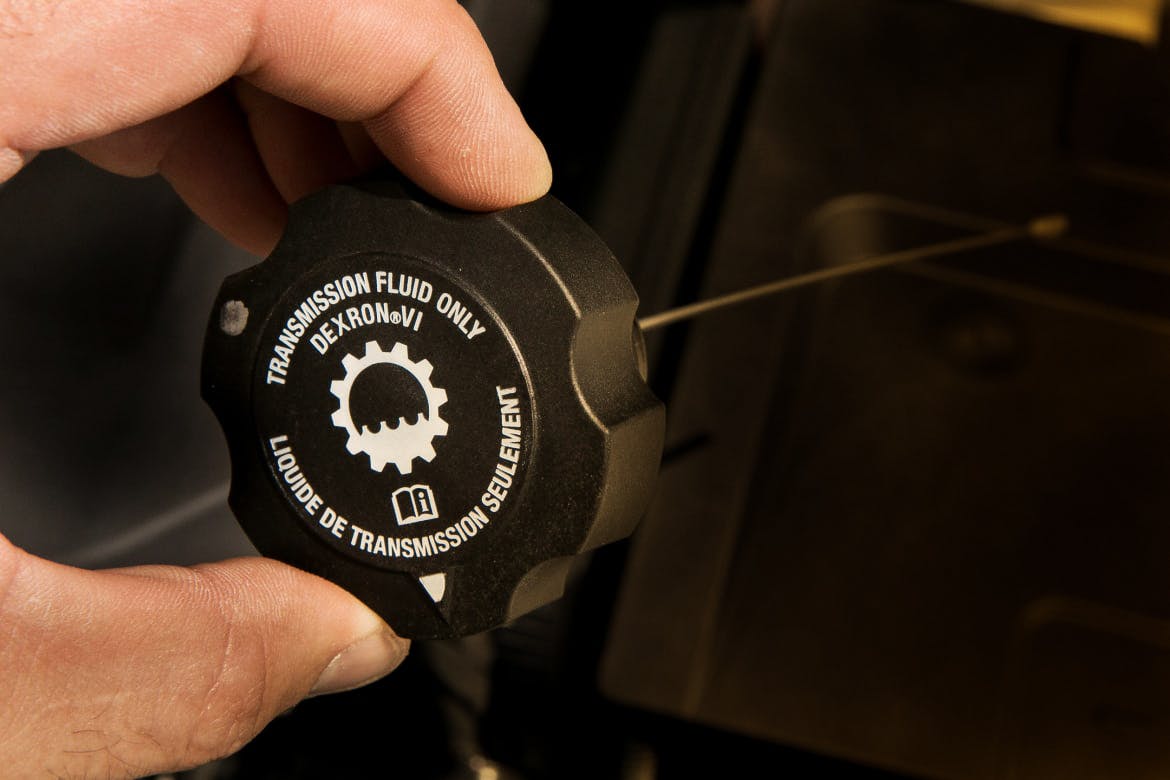Signs Of Low Transmission Fluid
The transmission system is in charge of transferring your engine's power to your wheels. Additionally, transmission fluid—which serves as both a coolant and lubricant to ensure that the gears and other components function flawlessly—is necessary for the smooth running of the transmission.
Too low transmission fluid levels can result in major problems.
To help you learn more, we will go into great detail on transmission fluid in this post
 .
.
Understanding The Transmission
Understanding the function of the transmission itself is essential to appreciating the relevance of transmission fluid. In essence, the gearbox is responsible for transferring engine power to the wheels and adjusting that power to fit different speeds, or "gears." Transmissions come in two main varieties: automatic and manual.
Manual gear changes require the use of a clutch pedal and stick shift on less common manual transmissions, which are frequently present in older cars.
The majority of modern cars come equipped with automatic gearboxes, which change gears on their own when you accelerate or decelerate without the need for human input.

Transmission fluid is necessary for the proper operation of both manual and automatic transmissions, regardless of the type of transmission. Gearbox fluid lubricates the moving components of the gearbox, minimizing friction during gear changes and supporting a number of operations, including torque converter, valve body, and clutch friction. It also helps with cooling the transmission.

Transmission fluid comes in two main varieties:
- Automatic transmission fluid, commonly used in most vehicles, is typically thin and clear with a red hue, though colors may vary by manufacturer.
- Manual transmission fluid is denser and darker, primarily used in older manual models.
Several warning signs can indicate low transmission fluid levels:
- Slipping gears manifests as difficulty shifting gears smoothly due to insufficient fluid for proper hydraulic pressure.
- delayed or rough shifting, indicating low fluid affecting the gear engagement process.
- Unusual noises during gear changes, such as whining, clunking, or buzzing.
- overheating, leading to potential damage to the transmission system and connected components.
- illumination of transmission or fluid-related warning lights on the dashboard.

Common causes of low transmission fluid include:
- Transmission fluid leaks from worn seals, gaskets, or a damaged transmission pan.
- Evaporation over time, although a sudden drop indicates a problem.
- Incorrect fluid levels due to inadequate refilling during maintenance or repairs.
For the transmission in your car to operate at its best, transmission fluid maintenance is essential. It is advised to flush and change your transmission fluid on a regular basis, usually every 30,000 to 60,000 miles. This timeline, however, may be impacted by variables including the make, model, driving style, and weather. It is crucial to be alert for any symptoms that can point to low transmission fluid levels in the meantime.
Unusual Noises
A quiet and smooth shift should be the ideal characteristic of your transmission. Unusual sounds could be a sign of low fluid levels, such as loud clunking or grinding in manual transmissions or whining and humming in automatic transmissions. Such disturbances should be checked out right away by a qualified expert to avoid the need for costly repairs down the road.
Burning Odor
A burning smell from your vehicle could signal overheated transmission fluid, potentially due to low fluid levels. Continued operation in this state may lead to increased friction, gunk buildup, and transmission damage over time.
Transmission Leaks
Transmission fluid maintains and cleans the transmission seals, in addition to moisturizing them. Red fluid beneath the car indicates a leak, which has to be inspected right away by an authorized dealer to stop the problem from getting worse.
Gear Slippage
Low transmission fluid levels may cause gears to miss, resulting in a grinding sensation. Even occasional slippage should prompt a transmission inspection to avoid costly repairs later.
Slow Gear Engagement
Low fluid levels lead to reduced pressure, causing slow engagement when shifting gears. Delayed engagement when putting the vehicle in drive or reverse might be indicative of low transmission fluid levels.

Poor Acceleration
Unresponsive or slow acceleration from a stop may indicate a transmission issue, necessitating inspection and service at a nearby service center.
Warning Lights
It is crucial to have your car checked out at the closest service facility if a check-engine or transmission warning light appears on the dashboard. This could point to a transmission problem, among other possible problems.
Low transmission fluid can jeopardize critical engine components.
- Gears and clutches may experience increased friction and wear, leading to poor shifting performance.
- Torque converters in automatic transmissions can overheat and suffer premature wear.
- Transmission bands may slip, causing improper gear engagement and potential damage.
- The valve body's functionality may be compromised, affecting the flow and direction of transmission fluid.
- Solenoids responsible for gear shifting may operate poorly due to low fluid levels.
- The transmission pump may experience increased wear and reduced efficiency without proper lubrication.
- Seals and gaskets may degrade, potentially resulting in leaks and further fluid loss.
Maintaining adequate transmission fluid levels is vital for ensuring the longevity and efficiency of your vehicle's transmission and related components.
What happens if there is extremely little transmission fluid?
One of the primary signs of insufficient transmission fluid is overheating. If there is not enough fluid to cool things down, smoke or a burning smell may be coming from your car. Consult a service center as soon as possible, as failure to do so could cause irreversible harm or possibly cause the loss of electricity.
How does transmission fluid get low without a leak?
The engine may pull trans fluid into the intake and burn it along with the fuel/air combination if the rubber diaphragm in the valve splits with age. The modulator valve is the first item to suspect if the transmission will not shift correctly, the fluid level is low, and there is no indication of a leak.
How frequently is transmission fluid changed?
The majority of manufacturers advise changing your gearbox fluid every 30,000 to 60,000 miles if you drive a manual. You may usually increase that range to 60,000 to 100,000 miles if your vehicle is automated. It is not harmful to replace your fluids early.
In conclusion, power transfer from your engine to your wheels is primarily accomplished by the transmission system, and the perfect operation of this system depends on the transmission fluid. Low fluid levels can lead to serious problems, which can be avoided by performing routine maintenance to maintain appropriate transmission fluid levels. You may protect vital engine parts and prolong the life of your car's transmission system by knowing the warning indications of low transmission fluid and following suggested repair schedules. To keep your car operating properly for many years to come, regular inspections and maintenance are essential.
Click on the following link to read another blog post: California ECU Tune Flash FAQ: Everything You Need to Know

















